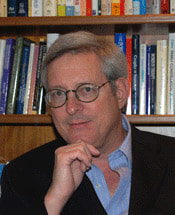|
After I wrote the article about Stuart Allen, saying he detected a second and actual order to fire (which no newspaper in the country, including the Daily Kent Stater, covered) I heard from John Mangels, the Plain Dealer's science reporter. Mangels was the author of the three front-page stories that gave rise to the calls for a new investigation. That made him, as far as I am concerned, one of the unsung heroes of May 4. He reminded me that he interviewed Captain Ron Snyder for his initial story on May 9, 2010, and that Snyder (like Captain Martin and Sergeant Matthew McManus) challenged Allen's finding, claiming the preliminary order did not sound like an order someone in the military would give.
That had completely slipped my mind, probably because Ron "Cynanide" Snyder is not a source I ever gave much credence to. That is partially because Snyder was not even among the squad that opened fire that day and thus, was not in a position to know what really happened. His unit was on the other side of Taylor Hall when the shootings broke, and the building completely blocked his view. Also, I still cannot get out of my head something said about Snyder after he originally told author James Michener, the Akron Beacon Journal, and a state grand jury that he confiscated a gun and brass knuckles off the body of slain student Jeffrey Miller. Snyder subsequently admitted he fabricated this claim because he wanted to make the victims seem dangerous, thereby making the shootings look justifiable. Snyder decided to come clean after the Justice Department started investigating this claim. I saw papers on Judge Frank Battisti's law clerk's desk suggesting the Justice Department seriously considered indicting him for perjury before the original state grand jury. I once had a beer with the editor who directed the ABJ's coverage, and he told me: "If he told me his name was Snyder, I still would not believe him." Snyder, incidentally, once guest lectured to my class in criminal justice at Kent in the spring of 1973. In a case of bad timing, I only found out about it afterwards. I had played hooky that day . . . Another interesting but not exactly earthshattering item: A few weeks ago I received a letter from the Justice Department's Freedom of Information office in response to an appeal I made for any records showing that the Justice Department did anything when they were asked to reinvestigate the new evidence. The Department's appeals division ignored part of my request and claimed they had no records of any such requests for reinvestigation, even though Justice Department officials met with a wounded survivor, other former students, and their attorney in May 2010. The Department's position--that there never were any calls for reinvestigation, and that no records ever were kept of this meeting, sounded highly suspicious to me. If the Department was telling the truth, that meant that all the public calls for a new investigation were made for publicity purposes, not to get the investigation. The wounded survivor I mentioned used to repeatedly get headlines by calling for additional investigations. Should not have he have made a formal request in writing? And did he and the others already understand that the only statute that still could be used to prosecute the Guardsmen--homicide--is a state, not a federal crime? The truth is there was not anything the Justice Department could have done anyway, save perhaps ask the National Academy of Sciences to review the tape and provide a second opinion . . . Finally, I recently received an e-mail out of the blue from a former Colorado National Guardsmen. He sharhed that that, after watching a film about riot control just before the campuses blew up in May 1970, "we all agreed that, if faced with a riot, we would set our M-16s on rock & roll (full automatic) and mow the protestors down." This dovetailed very closely with a story that a then Kent State student, told the FBI a year after the tragedy. The student claimed he hitched a ride from someone who told him he was one of the soldiers that fired at the students and that the troops had discussed shooting students before it actually happened. Unfortunately, the hitchhiker was only able to provide the FBI with very sketchy information about the soldier and his car. The FBI never was able to identify him, and that line of inquiry was never pursued by the attorneys who filed wrongful death claims against the Guardsmen. The letter at least reminded me of the mindset of many of those upholding the law--as well as many in the general public--in May 1970. The war and Kent State divided the country more deeply than any other time since the Civil War. As Time magazine reported even a year before the shootings , there was a sentiment throughout the country that when it came to the antiwar demonstrations, "enough is enough."
1 Comment
|
AuthorThis blog is written by William A. Gordon, a Kent State alumnus and the author of "Four Dead in Ohio" and three other books. It offers commentary on the still unfolding developments in the Kent State shooting case. Archives
March 2020
Categories
All
|
|
Kent State Shooting Expert
William A. Gordon Email: [email protected] Website: www.KentStateShootingsExpert.com |

 RSS Feed
RSS Feed
